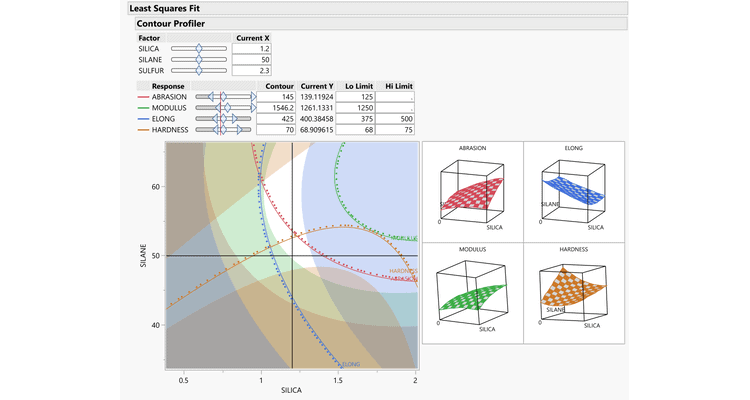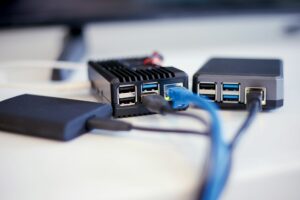Mastering Experimental Design in JMP: A Comprehensive Guide

Introduction: Experimental design plays a crucial role in scientific research and industrial experimentation, enabling researchers and engineers to systematically investigate relationships between variables and optimize processes. JMP is a powerful statistical software package developed by SAS Institute, specifically designed for exploratory data analysis, statistical modeling, and experimental design. In this comprehensive guide, we’ll explore the intricacies of designing experiments in JMP, covering everything from planning and setup to analysis and interpretation.
Section 1: Introduction to Experimental Design 1.1 Overview of Experimental Design: Experimental design is a structured approach to planning and conducting experiments, aiming to maximize information gain while minimizing resource expenditure. By systematically varying input factors and measuring their effects on the response variable(s), experimental design helps researchers identify significant factors, optimize process settings, and make data-driven decisions. JMP provides a user-friendly interface and powerful tools for designing and analyzing experiments in various fields, including science, engineering, and manufacturing.
1.2 Importance of Experimental Design: Well-designed experiments are essential for generating reliable and reproducible results, reducing variability, and extracting meaningful insights from data. Whether investigating new product formulations, optimizing manufacturing processes, or analyzing clinical trials, experimental design allows researchers to efficiently explore complex systems, identify critical factors, and uncover hidden relationships. JMP’s intuitive interface and robust statistical capabilities empower users to design experiments with confidence and analyze results effectively.
Section 2: Planning and Setup of Experiments 2.1 Define Objectives and Hypotheses: The first step in experimental design is to clearly define the objectives of the study and formulate testable hypotheses. Researchers should identify the key factors influencing the response variable(s) and specify the desired outcomes or performance metrics. By establishing clear objectives and hypotheses, researchers can focus their efforts on designing experiments that address specific research questions and objectives.
2.2 Select Experimental Design: JMP offers a wide range of experimental design methods, including factorial designs, response surface designs, mixture designs, and screening designs. Each design type has unique advantages and applications, depending on the research goals, number of factors, and experimental constraints. Researchers should select the most appropriate experimental design based on factors such as the number of factors to be studied, the desired level of precision, and the available resources.
Section 3: Designing Experiments in JMP 3.1 Factorial Designs: Factorial designs are a versatile experimental design method used to investigate the main effects of multiple factors and their interactions. In JMP, researchers can design factorial experiments using the DOE (Design of Experiments) platform, specifying factors, levels, and experimental runs. JMP provides tools for generating full factorial designs, fractional factorial designs, and custom designs tailored to specific research objectives.
3.2 Response Surface Designs: Response surface designs are used to model and optimize the relationship between input factors and response variables, typically in the presence of curvature or nonlinearity. In JMP, researchers can create response surface designs using the Custom Design platform or the Response Surface Design platform. JMP offers tools for fitting quadratic models, contour plots, and surface plots to visualize and analyze response surfaces.
Section 4: Conducting Experiments and Data Collection 4.1 Experimental Execution: Once the experimental design is finalized, researchers can conduct experiments according to the planned design matrix and experimental conditions. Data collection procedures should be standardized and consistent across experimental runs to minimize variability and ensure data quality. Researchers should record experimental observations, measurements, and responses systematically to facilitate subsequent analysis and interpretation.
4.2 Data Entry and Validation: In JMP, researchers can enter experimental data directly into the data table or import data from external sources such as spreadsheets or databases. JMP provides tools for data validation, cleaning, and transformation, allowing researchers to identify and correct errors, missing values, or outliers in the dataset. Data validation ensures the accuracy and integrity of the data before proceeding with analysis.
Section 5: Analyzing Experimental Data in JMP 5.1 Analysis of Variance (ANOVA): ANOVA is a fundamental statistical technique used to analyze experimental data and assess the significance of factor effects and interactions. In JMP, researchers can perform ANOVA using the Fit Model platform or the Analyze menu. JMP provides tools for estimating model parameters, testing hypotheses, and generating diagnostic plots to evaluate model assumptions and identify outliers or influential observations.
5.2 Response Optimization: Once the experimental data are analyzed, researchers can use JMP’s optimization tools to identify optimal process settings or conditions that maximize the response variable(s) of interest. JMP provides tools for conducting response surface optimization, constrained optimization, and Monte Carlo simulation to explore the response landscape and identify robust process settings that meet performance targets.
Section 6: Interpreting and Communicating Results 6.1 Interpretation of Results: The interpretation of experimental results involves understanding the implications of statistical findings, identifying significant factors, and drawing meaningful conclusions based on the evidence provided by the data. Researchers should interpret ANOVA results, parameter estimates, and diagnostic plots to understand the effects of factors and interactions on the response variable(s) and make informed decisions.
6.2 Communication of Findings: Effective communication of experimental findings is essential for sharing insights, informing decision-makers, and driving organizational change. Researchers should prepare clear, concise, and visually appealing reports or presentations summarizing the experimental design, results, and conclusions. JMP provides tools for generating custom reports, graphs, and interactive dashboards to communicate findings effectively to stakeholders and collaborators.
Section 7: Real-World Applications and Case Studies 7.1 Product Development: Experimental design is widely used in product development and optimization, enabling researchers to identify optimal formulations, process parameters, and design configurations. JMP has been used in various industries, including pharmaceuticals, consumer goods, and food and beverage, to design experiments, analyze data, and optimize product performance.
7.2 Quality Improvement: In manufacturing and process industries, experimental design is employed to improve product quality, reduce defects, and optimize production processes. JMP helps researchers design experiments, conduct statistical analysis, and implement process improvements to enhance product quality, increase yield, and reduce variability in manufacturing operations.
Conclusion: Experimental design is a powerful tool for researchers and engineers to systematically investigate relationships between variables, optimize processes, and make data-driven decisions. With its intuitive interface, powerful statistical tools, and flexible design capabilities, JMP empowers users to design experiments, analyze data, and derive actionable insights with confidence. By mastering the techniques and best practices outlined in this guide, researchers can leverage JMP’s capabilities to design efficient experiments, analyze complex datasets, and drive innovation in science, engineering, and manufacturing.







